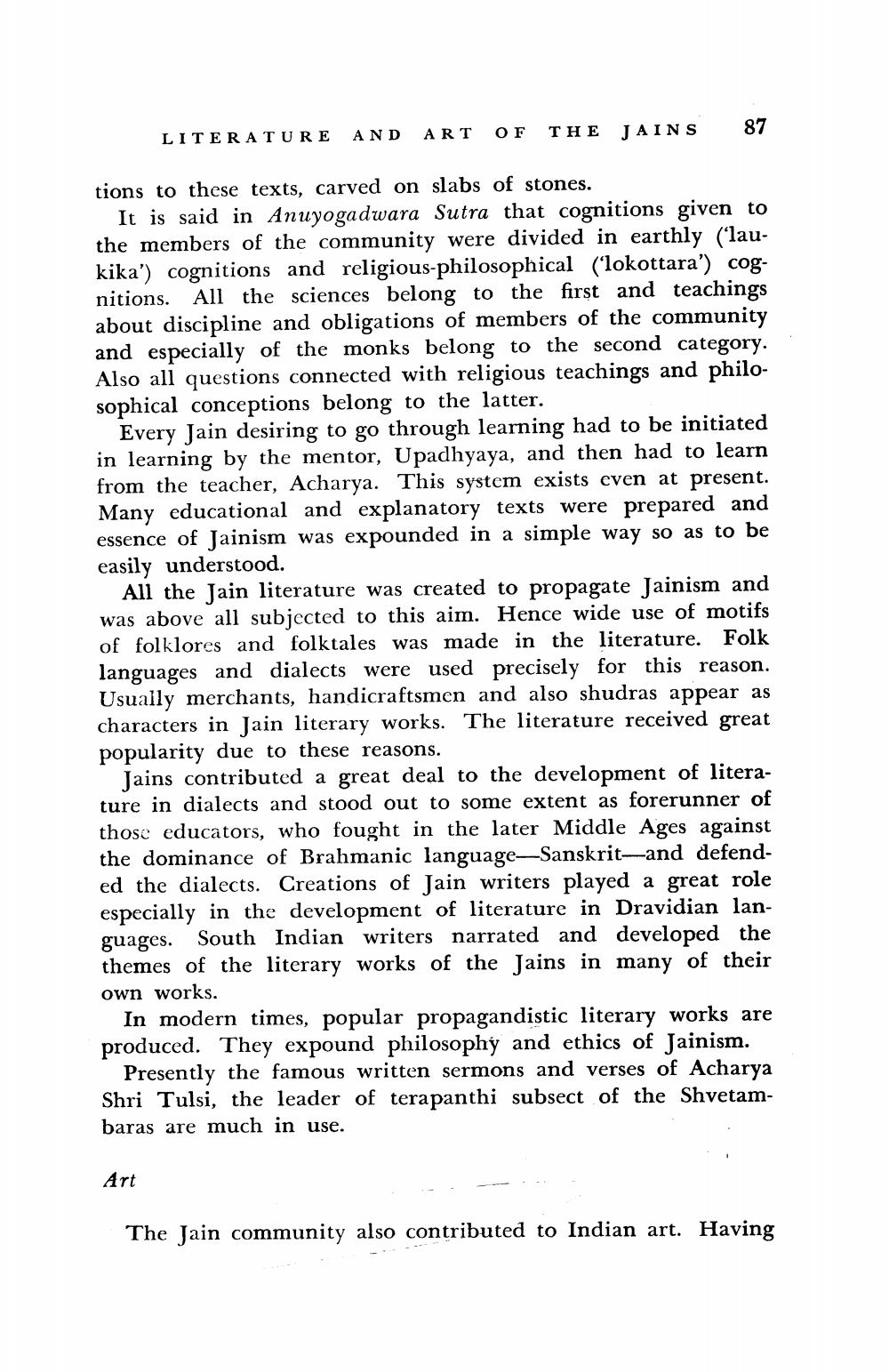________________
LITERATURE
AND ART OF
THE JAINS
Art
87
tions to these texts, carved on slabs of stones.
It is said in Anuyogadwara Sutra that cognitions given to the members of the community were divided in earthly (laukika') cognitions and religious-philosophical (lokottara') cognitions. All the sciences belong to the first and teachings about discipline and obligations of members of the community and especially of the monks belong to the second category. Also all questions connected with religious teachings and philosophical conceptions belong to the latter.
Every Jain desiring to go through learning had to be initiated in learning by the mentor, Upadhyaya, and then had to learn from the teacher, Acharya. This system exists even at present. Many educational and explanatory texts were prepared and essence of Jainism was expounded in a simple way so as to be easily understood.
All the Jain literature was created to propagate Jainism and was above all subjected to this aim. Hence wide use of motifs of folklores and folktales was made in the literature. Folk languages and dialects were used precisely for this reason. Usually merchants, handicraftsmen and also shudras appear as characters in Jain literary works. The literature received great popularity due to these reasons.
Jains contributed a great deal to the development of literature in dialects and stood out to some extent as forerunner of those educators, who fought in the later Middle Ages against the dominance of Brahmanic language-Sanskrit-and defended the dialects. Creations of Jain writers played a great role especially in the development of literature in Dravidian languages. South Indian writers narrated and developed the themes of the literary works of the Jains in many of their own works.
In modern times, popular propagandistic literary works are produced. They expound philosophy and ethics of Jainism.
Presently the famous written sermons and verses of Acharya Shri Tulsi, the leader of terapanthi subsect of the Shvetambaras are much in use.
The Jain community also contributed to Indian art. Having




